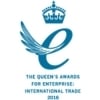Thermal management is essential in die casting, affecting both process efficiency and the quality of the final product. The combination of advanced materials, innovative cooling systems and precise temperature control allows modern die casting to meet increasingly complex demands for high-quality and intricate component design.
High pressure die casting (HPDC) involves injecting molten aluminium into a steel mould, where it rapidly cools and solidifies. The heat generated by the molten aluminium must be managed to prevent defects and ensure quality.
Excess heat can lead to rapid wear on the die, impacting both the longevity of the mould and the accuracy of the components. Effective thermal management minimises risks such as shrinkage, cracking or porosity and is key to optimising product performance.
Innovative Materials for Thermal Management
New die casting materials, designed to withstand high temperatures and offer superior thermal properties, are essential for heat management.Traditionally, H13 tool steel was widely used but new alloy options are now available to reduce heat build-up in the die. Different elements of the mould tool can be constructed from different grades of material, balancing structural, thermal, and cost considerations.
Precise temperature control is crucial for maintaining quality in die casting. Recent advancements enable real-time temperature regulation, with computerised systems adjusting coolant flow to maintain a consistent die temperature.
Closed-loop temperature control, which monitors and adapts to live data, ensures a stable temperature across the die surface, reducing the risk of flaws such as cracks or distortions.
Integrated water and oil-based cooling channels within the die provide an additional layer of temperature control. Water cooling, with its high heat absorption rate, is useful for rapid cooling, while oil-based systems offer a more gradual process – helping to prevent thermal shock and prolong die lifespan.

Advanced Cooling System Designs
Conformal cooling channels represent a significant innovation in die cooling, offering cooling pathways that follow the complex shapes within the die. Often manufactured using additive techniques, these channels align with the die’s geometry, optimising the cooling effect across its surface.
This reduces hot spots and enables faster cycle times, essential for high-volume production runs where consistency is critical. By directing coolant precisely to areas of intense heat, conformal cooling also minimises uneven temperature distribution, resulting in components with greater dimensional accuracy.
Beyond optimising cycle times, thermal management is essential for achieving high product quality. Precise cooling reduces thermal gradients, which can cause micro-cracks and distortions, weakening the cast component. Advanced thermal control also minimises porosity – a common issue in die casting that affects strength.
By preventing rapid cooling in certain regions, these systems reduce gas entrapment, resulting in a denser, more uniform structure. Effective thermal management also supports cost efficiency. Shortened cycle times mean increased production throughput without compromising quality, while optimised temperature control reduces the need for frequent die maintenance, helping to control operational costs over the long term.
Environmental Impact of Thermal Management Innovations
As sustainability becomes a priority, thermal management plays an important environmental role in die casting. By improving energy efficiency and reducing waste, effective heat control contributes to a lower carbon footprint in manufacturing.
Efficient thermal management reduces the energy needed for both melting and cooling processes, cutting greenhouse gas emissions and supporting eco-friendly manufacturing goals.
Additionally, optimised thermal management decreases material waste by minimising defects, which would otherwise require re-melting or recycling. This reduction aligns with industry objectives to meet regulatory standards and reduce reliance on raw materials, adding both economic and ecological value.
Future Developments
The future of die casting will see continued innovations in thermal management, with potential advancements such as intelligent temperature sensors, machine learning for process optimisation, and more environmentally friendly cooling fluids.
These technologies hold the promise of enhanced thermal control, supporting even greater efficiency and sustainability in production. With industries demanding lightweight, high-performance components, the die casting sector will need to stay ahead in thermal management innovations.
By embracing new materials, advanced cooling designs and improved temperature control methods, die casting will remain essential in meeting the stringent requirements of sectors such as automotive, electronics and aerospace.
Conclusion
Thermal management is central to efficiency, product quality and sustainability in die casting. Advances in materials, cooling systems and temperature control reflect ongoing innovation, ensuring this vital manufacturing process continues to meet industry demands for reliable and precise components.








